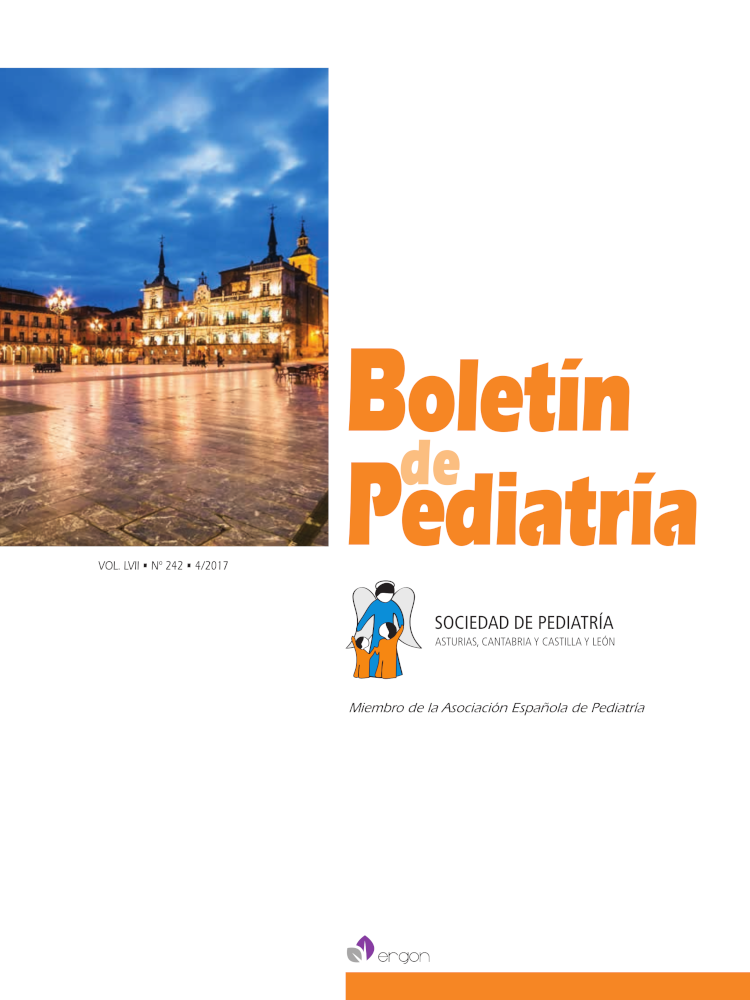Abstract
Rheumatisms constitute a group of chronic degenerative diseases which are common in childhood and affect the quality of life, causing significant consequences. Besides this, rheumatisms involve a substantial expenditure for the families, entail a high cost for the health system, and have a major impact on the child’s schooling process and integration. The evolutionary process, prognoses and treatments options for the different conditions of the rheumatic disease are varied. For the purpose of determining the frequency of the different entities of childhood debut in our environment, we have conducted a descriptive study by means of a review of the medical records of the cases admitted to the Clinical Management Unit of Pediatrics of the Hospital Universitario Central de Asturias (HUCA) from 2002 to 2017. We have collected the individual variables: age, reason for consultation, joint and extra-articular affectation, result of diagnostic tests, treatment received, and complications. A total of 52 cases have been included in the study, where juvenile idiopathic arthritis (JIA) has been observed as clearly predominant, being the oligoarticular variant the most diagnosed (46.2% of the total series). There has been a predominance of the female gender (female/male ratio 1.5/1). Local inflammation has been the main reason for consultation (59.6%), followed by pain (50%), with the knee joint most frequently affected (63.4%). Among the extra-articular manifestations, fever predominates (15.4%). Initial uveitis has been found in 7.7% of the cases, appearing later in 26.9% of them (half of these bilateral). Regarding treatments, all the patients have received non-steroidal anti-inflammatory drugs, 51.9% methotrexate, 36.5% treatment with biological drugs, and 19 (36.5%) joint infiltrations.

This work is licensed under a Creative Commons Attribution-NonCommercial 4.0 International License.
Copyright (c) 2017 Boletín de Pediatría
